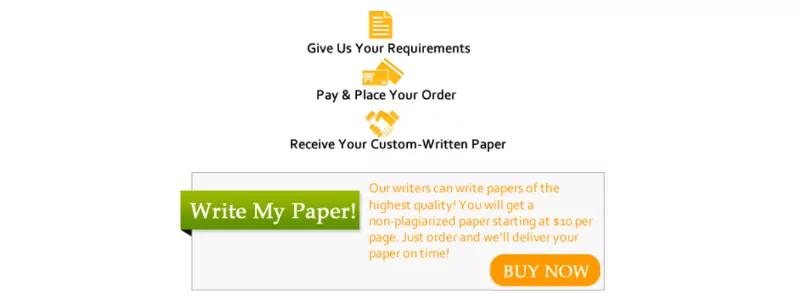Student Nurse Interview Questions and Answers
 As a dedicated nursing student, you’ve embarked on a journey of compassion, resilience, and skill development to reach the precipice of your dream career. The path you’ve chosen is one of remarkable rewards and significant challenges, where every interaction with patients becomes an opportunity to provide care, comfort, and healing. Transitioning from the classroom to the hospital floor is an exciting step, and your success hinges on acing the all-important nursing interview.
As a dedicated nursing student, you’ve embarked on a journey of compassion, resilience, and skill development to reach the precipice of your dream career. The path you’ve chosen is one of remarkable rewards and significant challenges, where every interaction with patients becomes an opportunity to provide care, comfort, and healing. Transitioning from the classroom to the hospital floor is an exciting step, and your success hinges on acing the all-important nursing interview.
This comprehensive guide is designed to equip you with the knowledge and confidence needed to navigate nursing interviews with poise and competence. Beyond your academic achievements, these interviews are an opportunity to showcase your empathy, clinical decision-making, crisis management abilities, and professionalism. In this article, we’ll explore a range of diverse nursing interview questions that span various academic levels, helping you prepare for success regardless of your experience.
Understanding the Nursing Interview Process:
Imagine the nursing interview as a bridge between your aspirations and the realm of healthcare, where your education, knowledge, skills, and experiences converge to create a vibrant picture of your potential as a nurse. It’s a platform where interviewers not only evaluate your technical expertise but also gauge your responses to hypothetical scenarios through situational questions. By mastering these questions, you showcase not just your qualifications but also your ability to thrive in a competitive field. Think of the interview as an opportunity to showcase your journey, weaving your personal narrative into your answers to highlight your empathy, resilience, and commitment to patient care. Beyond the surface, situational questions reveal your critical thinking, adaptability, and ethical decision-making under pressure – vital qualities in the world of nursing. Approach the interview as a chance to carve your unique path, standing out amid fellow candidates. As you craft your responses, envision yourself as a beacon of competence and compassion, ready to contribute meaningfully to the complex landscape of healthcare. The interview isn’t just a hurdle; it’s your gateway to a rewarding and impactful nursing career.
Mastering Nursing Interview Questions with the STAR Method
When it comes to answering behavioral-based nursing interview questions, the STAR method emerges as a guiding light, offering a structured approach to storytelling that captivates your experiences:
- Situation: Think back to a situation from your past where you confronted a challenge and emerged victorious. This is the foundation upon which your story will be built.
- Task: Clarify the specific task you undertook within that situation. Articulate your role clearly and succinctly, setting the stage for your subsequent actions.
- Action: Here’s your time to shine. Narrate the actions you took in response to the challenge. Don’t hold back on highlighting your qualities and strengths that came to the forefront during this scenario.
- Result: What was the outcome? How did your individual contributions steer the course towards success? Delve into how your actions shaped the conclusion and what insights you gained from the experience.
By employing the STAR method, you’re not just recounting events; you’re crafting a narrative that encapsulates your prowess in handling real-life situations. Whether you’re a seasoned nurse or a fresh graduate taking your first steps, this approach is a valuable tool for tackling various nursing interview questions. Picture it as your toolkit for articulating your capability to navigate challenges with aplomb and to contribute positively to future endeavors. Through the STAR method, you unveil your journey, portraying yourself as a beacon of competence and readiness in the realm of nursing.
Navigating the Most Common Nursing Interview Questions:
As you step onto the interview stage for nursing positions, you’ll likely encounter the familiar landscape of questions about your educational journey, clinical encounters, and the driving force behind your pursuit of this noble profession. These queries often orbit around the central themes of patient care, teamwork, and adaptability – cornerstones of the nursing profession. Think of these questions as an opportunity to paint your journey with vivid colors, showcasing how your commitment to providing exceptional patient care has been interwoven with your experiences. By sharing real-life examples and stories, you offer the interviewer a glimpse into your approach to challenging situations, your capacity to adapt seamlessly to the demands of patient care, and your readiness to work harmoniously within interdisciplinary healthcare teams. Through these behavioral-based interview questions, your stories become your canvas, revealing your adeptness at handling various aspects of nursing while also illuminating your potential to excel and thrive in the dynamic environment of the unit you aspire to join.
Common Interview Questions and Sample Answers
On Patient Care:
Tell me about a time you dealt with an unhappy or difficult patient or family member.
Navigating challenges with patients and their families requires tact and empathy. Avoid violating privacy while showing your understanding. If there was a mistake on your part, admit it and explain how you rectified the situation.
Sample answer:
“I once cared for a patient with a new wound care order, and their family member wasn’t satisfied with my dressing choice. I reassured her that I followed the doctor’s orders and explained the treatment in simple terms. I ensured she understood and apologized for any confusion. She appreciated my effort and thanked me for taking time to clarify.”
How do you explain medications, treatments, or healthcare situations without using a lot of medical jargon?
Demonstrate your communication skills by recounting an instance where you simplified complex concepts for patients using relatable terms.
Sample answer:
“Many patients have varying health knowledge. During my time as a home healthcare nurse, I encountered patients unfamiliar with medical terms. Instead of using technical words, I’d say ‘swelling’ instead of ‘edema’ and ‘high blood pressure’ for ‘hypertension.’ I’d make sure they grasped by having them repeat what they heard in their own words.”
Describe a time a patient was really happy with your care or a time you went above and beyond for a patient.
This is your moment to shine. Showcase your patient-focused attitude and any special skills you possess.
Sample answer:
“I recall a patient with congestive heart failure who struggled due to dietary restrictions. I explained the restrictions thoroughly, provided examples, and even arranged a dietary consult. Months later, she mailed a card, thanking me for my guidance and sharing her improved health.”
On Teamwork:
Describe a situation when you had to work with a difficult coworker. What was the problem, and how did you resolve it?
Handle this diplomatically. Illustrate your conflict resolution skills and what you learned from the experience.
Sample answer:
“I once collaborated with a coworker who hurried through handoff reports, leading to misinformation. I approached her politely, suggesting walking rounds to prevent miscommunication. We agreed, which taught me the importance of addressing issues directly.”
Describe a situation where you displayed teamwork.
Highlight your team spirit by narrating an instance where you supported a colleague in need.
Sample answer:
“In a bustling long-term care setting, a coworker faced a heavy workload with a fall, admission, discharge, and med pass. I offered to assist with the admission and discharge paperwork. This small effort allowed him to complete his tasks on time.”
On Adaptability:
What do you do when you don’t know an answer to a patient’s question or how to address a situation?
Showcase your commitment to learning and problem-solving by describing how you seek answers and guidance.
Sample answer:
“When facing uncertainty, I research and seek guidance. I’ll clarify patient diagnoses and medications. If I’m still unsure, I consult experienced colleagues, providers, or even pharmacists. I prioritize patient safety by not assuming.”
How do you handle changes to your assignment, the unit, schedule, etc.?
Embrace the dynamic nature of nursing by illustrating your adaptability.
Sample answer:
“As nursing constantly evolves, I’m quick to adapt. For instance, when our facility transitioned to electronic medical records, I embraced the change. Observing colleagues struggling, I joined a support team to ease the transition from paper charting.”
Describe a time you were under a lot of pressure. How did you handle it?
Relate a situation where you managed stress effectively, showcasing your resilience.
Sample answer:
“During an on-call week while also being the staff development nurse, I faced multiple crises daily. To manage stress, I organized a system for handling non-emergent issues the next day. This proactive approach reduced anxiety and allowed me to tackle issues more effectively.”
Good Nursing Interview Questions: Insights and Expert Responses
On Leadership and Critical Thinking:
Describe a situation where you had to make a quick decision in a high-pressure environment.
Highlight your ability to think on your feet and prioritize patient care in a challenging scenario.
Sample answer:
“During a code blue situation, I had to decide whether to administer a potentially life-saving medication without a physician present. I quickly assessed the patient’s condition, recalled relevant protocols, and made the decision to administer the medication, ultimately stabilizing the patient until the doctor arrived.”
Give an example of a time when you had to advocate for a patient’s safety or rights.
Illustrate your dedication to patient advocacy and your ability to communicate assertively when necessary.
Sample answer:
“I once encountered a situation where a patient’s prescribed medication clashed with their known allergies. I immediately alerted the attending physician and advocated for an alternative treatment plan. By advocating for the patient’s safety, we prevented a potentially harmful reaction.”
Describe a complex patient case you were involved in and the steps you took to ensure coordinated care.
Showcase your holistic approach to patient care and your capacity to collaborate effectively with multidisciplinary teams.
Sample answer:
“I cared for a patient with multiple chronic conditions who required coordinated care. I initiated a team meeting to discuss the patient’s needs, collaborated with specialists, and ensured all providers were on the same page. This comprehensive approach led to improved patient outcomes.”
On Professional Development:
How do you stay current with the latest advancements and best practices in nursing?
Demonstrate your commitment to continuous learning and staying informed about industry trends.
Sample answer:
“I regularly attend nursing conferences, engage in online forums, and subscribe to reputable medical journals. These avenues provide me with insights into emerging treatments and evidence-based practices, allowing me to deliver the highest quality of care.”
Describe a situation where you encountered a challenging ethical dilemma. How did you approach it?
Showcase your ethical decision-making skills and your ability to navigate complex moral dilemmas.
Sample answer:
“I once faced a situation where a patient’s family requested not to disclose the patient’s terminal diagnosis. Balancing truth and patient autonomy, I engaged in an open conversation, explaining the importance of informed decision-making while respecting the family’s wishes. Ultimately, we arrived at a shared understanding that upheld both ethical principles and compassionate care.”
On Future Goals and Contributions:
Where do you see yourself in five years within the nursing profession?
Outline your aspirations and your desire to contribute to the field’s advancement.
Sample answer:
“In five years, I envision myself as a skilled clinical nurse specialist, actively mentoring junior colleagues and contributing to quality improvement initiatives within the hospital. I am committed to pursuing advanced certifications to enhance my expertise and provide exemplary patient care.”
How do you plan to contribute to a positive work environment and foster a culture of collaboration?
Demonstrate your commitment to creating a harmonious workplace and your understanding of the importance of teamwork.
Sample answer:
“I believe in fostering open communication, acknowledging colleagues’ contributions, and promoting a culture of mutual respect. By actively engaging in interdisciplinary collaborations, sharing insights, and appreciating diverse perspectives, I aim to contribute to a work environment that thrives on shared goals and effective teamwork.”
Additional Sample Nursing Interview Questions with Expert Insights
On Introducing Yourself:
“Tell me about yourself.”
When asked about yourself in an interview, strike a balance between authenticity and optimism. You want to showcase your strengths without appearing boastful. Share how your journey, from your passion for nursing to your commitment to patient care, has led you to this point.
Sample answer:
“I believe in being transparent while highlighting my positive attributes. I bring a blend of empathy and efficiency to my nursing practice, striving to make a meaningful impact on patients’ lives while continuously learning and growing.
On Enjoying Nursing:
“What do you like most about being a nurse?”
Sample answer:
“Being a nurse is fulfilling on multiple levels. The opportunity to positively impact lives and the challenge of the role resonate with me. Each day brings new chances to learn, adapt, and provide comfort to those in need.”
On the General Challenges in Nursing:
“What do you find most difficult about being a nurse?”
Sample answer:
“The emotional toll can be challenging. Witnessing suffering and making peace with certain outcomes is a constant struggle. However, the rewarding moments and the ability to make a difference remind me why I chose this path.”
On Changing Positions:
“Why are you leaving your current position?”
Sample answer:
“I seek fresh challenges and ways to apply my skills. I’m eager for a role that provides growth and novel experiences to further my nursing journey.”
On Choosing the Prospective Workplace:
“Why do you want to work here?”
Sample answer:
“The facility’s emphasis on exceptional patient care and collaborative atmosphere resonates with my values. I believe this environment aligns well with my approach to nursing, enabling me to provide optimal care.”
On Strengths and Weaknesses:
“What are your strengths and weaknesses as a nurse?”
Sample answer:
“Connecting with patients, offering empathy and efficiency, are my strengths. Emotionally, witnessing suffering is a challenge, but I’m continually developing ways to cope.”
On Choosing Nursing:
“Why did you choose nursing as your chosen profession?”
Sample answer:
“My intrinsic desire to aid and support others drew me to nursing. The chance to create tangible impacts and improve lives has always been a driving force for me.”
On Essential Nursing Qualities:
“What do you think are the most important qualities of a successful nurse?”
Sample answer:
“Vital qualities include patience, empathy, and an unwavering commitment to helping. Effective communication and resilience under pressure are equally crucial for thriving in this dynamic field.”
On Current Nursing Challenges:
“What do you think are the biggest challenges facing nurses today?”
Sample answer:
“The escalating demands placed upon nurses are substantial. Providing quality care amid resource constraints is challenging. Additionally, the ongoing nursing shortage contributes to burnout and compassion fatigue, further underscoring the need for a supportive work environment and proactive measures to address these challenges.”
Other Specific Nursing Interview Questions
Pediatric Nursing Interview Questions
“Why are you interested in pediatric nursing?”
The realm of pediatric nursing captivates me due to my genuine love for working with children. Witnessing their resilience and being a source of comfort during their vulnerable moments is incredibly rewarding. The chance to make a positive impact on their lives and contribute to their overall well-being drives my passion for this specialty.
“What strategies do you use to establish rapport with pediatric patients?”
Building a strong rapport with pediatric patients requires a blend of patience, empathy, and effective communication. I approach them with a warm and friendly demeanor, using age-appropriate language to ensure they feel understood and valued. Engaging them through play and involving them in their care decisions helps create a trusting relationship.
“How do you handle anxious or scared pediatric patients?”
Addressing anxiety in pediatric patients involves a tailored approach. I strive to alleviate their fears by explaining procedures in a comforting and understandable manner. Employing distraction techniques, such as storytelling or involving them in choosing medical equipment colors, helps redirect their attention and reduce their anxiety.
“Describe a challenging experience you’ve had with a pediatric patient and how you managed it.”
Once, I encountered a pediatric patient who was terrified of needles. To ease their anxiety, I began by establishing trust through conversation and play. I provided them with choices, allowing them to pick the spot for their IV insertion. Throughout the process, I maintained a soothing demeanor and continually reassured them, resulting in a successful procedure with minimal distress.
“How do you involve parents or caregivers in a pediatric patient’s care?”
Collaboration with parents and caregivers is pivotal in pediatric nursing. I ensure they are informed and actively engaged by explaining treatment plans and involving them in decision-making. Regular updates, open communication, and addressing their concerns contribute to a holistic approach to the child’s well-being.
“Can you give an example of how you’ve effectively communicated complex medical information to a child and their family?”
In a situation where a child needed to understand their chronic condition and treatment, I utilized age-appropriate terminology and visuals to explain. By using relatable analogies and involving the child’s interests, I helped them grasp the concept. Simultaneously, I engaged the family, providing them with resources and support to reinforce the child’s understanding.
“How do you handle a pediatric patient’s non-compliance with treatment?”
Addressing non-compliance requires understanding the underlying reasons. I approach this situation by openly discussing concerns with the child and family. Together, we explore any challenges they face and collaboratively develop strategies to make treatment more manageable. Empathy, active listening, and working as a team help overcome non-compliance hurdles.
Mental Health Nursing Interview Questions
“What draws you to the field of mental health nursing?”
Mental health nursing intrigues me due to its unique blend of compassionate care and the opportunity to foster positive change in individuals facing mental health challenges. I’m passionate about providing holistic support and breaking down stigma surrounding mental health issues.
“How do you approach building trust with patients in a mental health setting?”
Building trust in mental health nursing is crucial. I prioritize active listening, empathy, and non-judgmental communication. I create a safe and supportive environment where patients feel comfortable sharing their thoughts and emotions, enabling them to engage in their recovery journey.
“Describe a situation where you successfully de-escalated a tense situation with a mentally distressed patient.”
During a challenging moment, a patient became agitated and aggressive. I remained calm, maintaining a respectful distance while using a soothing tone. I acknowledged their feelings, validated their experience, and offered options for coping strategies. By prioritizing their autonomy and demonstrating empathy, I managed to de-escalate the situation peacefully.
“How do you handle situations where a patient’s treatment plan conflicts with their personal beliefs?”
Respecting a patient’s autonomy while ensuring their safety is crucial. I engage in open conversations, actively listening to their concerns. Together, we explore alternative options that align with their values while still supporting their mental health needs. Collaborative decision-making ensures a patient-centered approach.
“Can you provide an example of how you’ve promoted a therapeutic environment in a mental health unit?”
In a mental health unit, I initiated group therapy sessions that encouraged open sharing and mutual support. I facilitated discussions on coping skills, providing patients a safe space to connect and learn from one another’s experiences. By fostering a sense of community, we created a therapeutic environment that aided in their healing.
“How do you address stigma associated with mental health when working with patients and their families?”
Addressing stigma involves education and empathy. I provide information about mental health conditions and their biological basis, emphasizing that seeking treatment is a sign of strength. I involve families in discussions, helping them understand their loved one’s journey and encouraging a supportive approach.
“How do you prioritize self-care while working in a mentally demanding environment?”
Self-care is paramount in mental health nursing. I ensure regular breaks, practice mindfulness techniques, and engage in activities I enjoy outside of work. Supervision and debriefing sessions help me process challenging situations. By nurturing my well-being, I can provide better care to my patients.
Situational Nursing Interview Questions
“Describe a time when you had to handle a medical emergency or urgent situation. How did you respond?”
During a night shift, a patient experienced a sudden drop in blood pressure. I immediately assessed the situation, initiated IV fluids, and contacted the physician. I remained composed, updated the patient’s family, and collaborated with the healthcare team to stabilize the patient’s condition. This experience highlighted the importance of quick thinking and effective teamwork.
“Tell us about a situation where you had to advocate for a patient’s needs and preferences.”
I had a patient with limited English proficiency who was hesitant to undergo a procedure. Recognizing the need for clear communication, I arranged for a medical interpreter and explained the procedure thoroughly. I also engaged the patient’s family to address their concerns. Through patient-centered care and effective advocacy, we ensured the patient’s understanding and comfort.
“Share a scenario where you faced a communication breakdown within a healthcare team. How did you resolve it?”
During rounds, a miscommunication between the nursing and medical team resulted in a medication error. I immediately addressed the issue with the team, focusing on finding a solution rather than placing blame. We implemented a better communication system, including written handoff notes, and held brief huddles to ensure everyone was on the same page.
“Describe a time when you had to handle a difficult patient or family member. How did you manage the situation?”
A family member was frustrated with the care their loved one was receiving and became confrontational. I remained calm, actively listened to their concerns, and empathized with their emotions. I offered reassurance, explained the care plan, and involved them in the decision-making process. By validating their feelings and collaborating, we diffused the tension and built rapport.
“Can you share an instance where you identified a potential patient safety issue and took proactive measures to prevent it?”
During medication administration, I noticed a dosage discrepancy in the order. Instead of proceeding, I double-checked with the physician, who confirmed the error. I also notified the charge nurse and documented the incident. By prioritizing patient safety over routine tasks, I prevented a potential adverse event and emphasized the importance of thorough checks.
“Tell us about a time when you had to manage conflicting priorities or a heavy workload. How did you ensure all tasks were completed effectively?”
During a busy shift, I had multiple patient assessments, medication administrations, and documentation tasks. I prioritized tasks based on patient acuity and communicated with colleagues to share responsibilities. I stayed organized, utilized time management techniques, and focused on clear communication to ensure all patients received the necessary care without compromising quality.
“Describe a situation where you faced resistance from a patient or family member in following the treatment plan. How did you address their concerns?”
A patient with a chronic condition was hesitant to adhere to their prescribed treatment plan due to lifestyle changes. I engaged in an open conversation, understanding their fears and challenges. I explained the rationale behind the treatment, provided education on potential benefits, and explored alternative options. By building trust and involving them in decision-making, I helped the patient make an informed choice.
PACU Nurse Interview Questions
“Describe a situation when you had to handle a patient who experienced post-operative complications in the PACU. How did you respond?”
After surgery, a patient exhibited signs of respiratory distress in the PACU. I immediately assessed their airway, administered oxygen, and notified the surgical team. I initiated appropriate interventions and closely monitored the patient’s vital signs. Collaboration with the anesthesiologist and surgeon resulted in a swift response, ensuring the patient’s stability and prompt recovery.
“Tell us about a time when you had to manage multiple patients with varying post-operative needs simultaneously. How did you prioritize and provide adequate care?”
In the PACU, I had multiple patients recovering from different surgeries. I assessed each patient’s level of consciousness, pain, and vital signs. I prioritized care based on acuity and urgency, ensuring that critical cases received immediate attention while maintaining ongoing monitoring for others. Effective delegation and teamwork among PACU staff allowed us to provide thorough care to all patients.
“Share a scenario where you had to deal with a patient’s emergence from anesthesia, and they exhibited agitation and confusion. How did you manage the situation?”
A patient woke up disoriented and agitated after anesthesia. I recognized this as a common emergence phenomenon and provided calm reassurance. I maintained a soothing environment, minimized stimuli, and utilized appropriate communication techniques. By offering continuous support and addressing the patient’s concerns, I helped them transition smoothly from the effects of anesthesia.
“Describe a time when you had to advocate for a patient’s post-operative pain management. How did you ensure their comfort while considering safety?”
I had a patient who was experiencing severe pain post-operatively but was hesitant to receive strong pain medication due to concerns about side effects. I collaborated with the anesthesia team to tailor a pain management plan that balanced effective pain relief with the patient’s preferences. Through careful assessment, individualized interventions, and regular communication, we achieved optimal pain control while addressing their concerns.
“Tell us about a situation where you had to handle a patient with delayed emergence from anesthesia. How did you provide appropriate care and monitor their recovery?”
I had a patient who took longer than expected to emerge from anesthesia in the PACU. I closely monitored their vital signs, neurological status, and respiratory function. I collaborated with the anesthesia provider to ensure proper reversal of anesthesia agents and evaluated the patient’s response. By maintaining vigilant observation and prompt communication, I ensured the patient’s safety during their extended recovery period.
“Share an instance when you had to communicate complex post-operative instructions to a patient and their family in the PACU. How did you ensure their understanding?”
After surgery, I had a patient with specific discharge instructions and medication management. I used clear and simple language, avoided medical jargon, and provided written instructions. I encouraged the patient’s family to ask questions and repeat the instructions back to ensure comprehension. By promoting open communication and patient education, I enhanced their ability to follow the plan accurately.
“Describe a situation where you had to collaborate with the surgical team to ensure a smooth transition of care for a critically ill patient from the OR to the PACU.”
A patient with complex surgical needs required seamless transition from the OR to the PACU. I communicated with the surgical team to obtain detailed information about the procedure and anticipated post-operative care. I ensured that the PACU was adequately prepared, with necessary equipment and personnel ready to receive the patient. Through effective interdisciplinary communication and meticulous planning, we facilitated a safe and efficient handoff of care.
ICU Nurse Interview Questions
“Describe a situation when you had to provide critical care to a patient with multiple life-threatening conditions. How did you prioritize interventions and ensure the best possible outcome?”
I once cared for a patient in the ICU who had sepsis, respiratory failure, and acute kidney injury. I assessed their condition comprehensively and identified the most pressing needs. I collaborated with the medical team to initiate appropriate interventions, such as administering antibiotics, optimizing mechanical ventilation, and implementing hemodynamic monitoring. By closely monitoring the patient’s response and adjusting interventions as needed, I contributed to stabilizing their condition and promoting recovery.
“Tell us about a time when you had to manage a challenging family dynamic while providing care to a critically ill patient in the ICU.”
I encountered a situation where a patient’s family members had conflicting opinions about the patient’s care plan. I approached them with empathy, actively listening to their concerns and addressing each person’s perspective. I provided clear explanations of the patient’s condition, treatment options, and potential outcomes. By fostering open communication, involving the interdisciplinary team, and ensuring family members were informed, I facilitated a collaborative decision-making process that ultimately prioritized the patient’s well-being.
“Share a scenario where you had to respond to a sudden deterioration in a patient’s condition in the ICU. How did you initiate appropriate interventions and involve the medical team?”
While caring for a patient in the ICU, I noticed a sudden drop in their blood pressure and altered mental status. I immediately assessed the patient, initiated interventions to improve perfusion, and escalated the situation by notifying the medical team. I collaborated with them to adjust medication dosages and implement interventions such as fluid resuscitation. By promptly recognizing and addressing the issue, I contributed to stabilizing the patient’s condition and preventing further deterioration.
“Describe a time when you had to provide end-of-life care to a patient in the ICU. How did you ensure comfort for the patient and support for their family?”
I cared for a terminally ill patient in the ICU whose condition was not improving. I initiated a compassionate conversation with the family to discuss the patient’s prognosis and wishes. I ensured that the patient was comfortable by managing pain and promoting dignity. I also provided emotional support to the family, addressing their concerns and facilitating open communication. By involving palliative care resources and collaborating with the interdisciplinary team, I helped guide the patient and their family through a difficult transition.
“Tell us about a situation where you had to advocate for a critically ill patient’s needs or preferences in the ICU.”
I had a patient in the ICU who was non-verbal and unable to communicate their needs. I noticed signs of distress and discomfort. I advocated for the patient by requesting a consult from the speech therapy team to explore alternative communication methods. I also collaborated with the nursing team to ensure pain management was tailored to the patient’s cues and responses. Through proactive advocacy and interdisciplinary collaboration, I ensured the patient’s needs were met despite their communication challenges.
“Share a scenario where you had to manage a patient’s care during a sudden influx of ICU admissions. How did you prioritize tasks and ensure safe patient care?”
During a period of high patient admissions to the ICU, I focused on efficient and prioritized care delivery. I assessed each patient’s acuity, anticipated needs, and collaborated with the nursing team to allocate resources appropriately. I ensured that critical patients received immediate attention while maintaining ongoing monitoring for others. By staying organized, delegating tasks effectively, and maintaining clear communication, I contributed to safe and quality care for all patients during the influx of admissions.
“Describe a time when you had to work collaboratively with the ICU team to prevent a potential adverse event. How did your communication and teamwork contribute to a positive outcome?”
I encountered a situation where a patient’s condition was deteriorating, and there were concerns about potential sepsis. I immediately communicated with the medical team, shared my assessment findings, and advocated for prompt interventions. I collaborated with the nursing team to ensure necessary labs were drawn, antibiotics were administered, and hemodynamic monitoring was initiated. By fostering a culture of open communication and collaborative problem-solving, we successfully intervened early and prevented the escalation of the patient’s condition.
ER Nurse Interview Questions
“Describe a situation when you had to provide care to a critically ill patient in the emergency room. How did you prioritize interventions and ensure timely treatment?”
I encountered a critical situation where a patient presented with severe respiratory distress and hypotension. I immediately assessed the patient’s airway, breathing, and circulation, prioritizing interventions to stabilize them. I collaborated with the medical team to expedite necessary tests, such as arterial blood gases and imaging, while initiating oxygen therapy and intravenous fluids. By staying focused on rapid assessment, clear communication, and timely interventions, I contributed to the patient’s stabilization and preparation for further care.
“Tell us about a time when you had to manage a high-stress scenario in the emergency room, such as a multiple casualty incident. How did you coordinate care and ensure effective communication among the team?”
I was part of the team responding to a multi-vehicle accident involving several injured patients. I immediately assumed a leadership role, coordinating assignments and delegating tasks based on the severity of injuries. I ensured effective communication by using clear and concise handoffs and providing frequent updates to the team. By creating a structured approach to triage, treatment, and transport, we efficiently managed the situation and ensured that each patient received the appropriate level of care.
“Share a scenario where you had to communicate sensitive information to a patient’s family in the emergency room. How did you approach the situation with empathy and professionalism?”
I encountered a situation where a patient’s family was awaiting news about their loved one’s condition after a severe injury. I approached them with empathy, introduced myself, and provided a private and comfortable space. I communicated the information in clear and compassionate terms, acknowledging their concerns and answering their questions honestly. By providing emotional support, active listening, and regular updates, I aimed to alleviate their anxiety during a challenging time.
“Describe a time when you had to make quick decisions in a fast-paced environment while managing multiple patients in the emergency room. How did you ensure safe and efficient care?”
During a busy shift in the emergency room, I faced a situation where multiple patients required immediate attention. I quickly assessed the severity of each case, prioritizing care based on acuity. I collaborated with the nursing team and communicated effectively to ensure smooth transitions and timely interventions. By maintaining a calm demeanor, utilizing critical thinking, and efficiently delegating tasks, I contributed to safe and efficient care delivery for all patients.
“Tell us about a situation where you had to provide care to a patient with a mental health crisis in the emergency room. How did you approach de-escalation and ensure their safety?”
I encountered a patient experiencing severe agitation and aggression due to a mental health crisis. I immediately assessed the situation for potential risks and initiated communication with a psychiatric liaison. I employed de-escalation techniques, such as maintaining a calm tone, establishing rapport, and providing a safe environment. I collaborated with the psychiatric team to develop a care plan that prioritized the patient’s safety and well-being. By focusing on communication, empathy, and appropriate interventions, I helped ensure a positive outcome for the patient.
“Describe a time when you had to handle a situation involving a patient who was non-compliant with medical instructions in the emergency room. How did you address their concerns and encourage them to follow the recommended treatment plan?”
I encountered a patient who was hesitant to receive a necessary procedure due to fear and anxiety. I approached the situation by actively listening to their concerns, addressing their fears, and providing thorough explanations of the procedure’s benefits and risks. I collaborated with the medical team to explore alternatives and ensure the patient’s comfort. By establishing trust, offering options, and involving the patient in the decision-making process, I helped alleviate their concerns and encouraged their compliance with the treatment plan.
OR Nurse Interview Questions
“Describe a scenario in which you had to handle an unexpected complication during surgery. How did you react, and what steps did you take to ensure patient safety?”
During a procedure, I encountered unexpected bleeding that required immediate attention. I remained calm and alerted the surgical team while implementing hemostatic measures. I communicated the situation clearly, collaborated with the surgeon to adjust the surgical plan, and provided necessary instruments promptly. By maintaining a composed demeanor, quick thinking, and effective communication, I contributed to resolving the complication while prioritizing patient safety.
“Tell us about a time when you had to work in a high-pressure environment during a complex surgery. How did you manage the stress and ensure seamless coordination with the surgical team?”
I participated in a lengthy procedure involving multiple surgical specialties. The situation required intense focus and seamless coordination. To manage the stress, I ensured a thorough pre-operative checklist, clarified roles with the team, and maintained open communication throughout. By anticipating needs, addressing challenges proactively, and fostering collaboration, I contributed to a successful surgery and a positive patient outcome.
“Share a situation in which you had to advocate for patient safety in the operating room. How did you address a concern and ensure that proper protocols were followed?”
While preparing for surgery, I noticed a discrepancy in the patient’s identification and surgical site marking. I halted the process and informed the team, emphasizing the importance of patient safety and following correct protocols. I ensured that the patient’s identity was verified, and the surgical site was properly marked. By speaking up and prioritizing safety, I upheld the highest standards of care and prevented potential errors.
“Describe a time when you had to collaborate closely with the anesthesia team during surgery. How did effective communication and teamwork contribute to a successful outcome?”
I encountered a situation where the patient experienced a sudden drop in blood pressure during surgery. I immediately communicated the change to the anesthesia team, while monitoring the patient’s vital signs closely. By working together to assess the situation, adjusting medications, and maintaining clear communication, we stabilized the patient’s condition promptly. This experience highlighted the significance of interdisciplinary collaboration in the operating room.
“Tell us about a time when you had to adapt to a last-minute change in the surgical procedure. How did you handle the situation and ensure that the team remained coordinated and focused?”
During a surgery, the surgeon decided to alter the approach based on intraoperative findings. I quickly adjusted the sterile field, communicated the changes to the team, and ensured that necessary instruments were prepared. By staying adaptable, anticipating the surgeon’s needs, and maintaining open communication, I contributed to a smooth transition and maintained a focused and coordinated environment.
“Describe a scenario in which you encountered equipment malfunction during a critical moment in surgery. How did you troubleshoot the issue and ensure minimal disruption to the procedure?”
While performing a procedure, a crucial piece of equipment malfunctioned unexpectedly. I immediately alerted the team, identified alternative options, and worked with the surgical tech to troubleshoot the issue efficiently. By staying composed under pressure, demonstrating problem-solving skills, and collaborating with the team, I ensured minimal disruption to the procedure and maintained patient safety.
“Tell us about a time when you had to manage a challenging case involving a pediatric patient in the operating room. How did you ensure their comfort and provide age-appropriate care?”
I participated in a pediatric surgery where the patient was anxious and fearful. To ensure their comfort, I engaged in therapeutic communication, explaining the procedure in child-friendly terms and involving them in decisions when appropriate. I collaborated with the anesthesia team to provide age-appropriate sedation and maintained a soothing environment. By prioritizing the child’s emotional well-being and tailoring care to their needs, I helped create a positive surgical experience.
Labor and Delivery Nurse Interview Questions
“Describe a situation in which you had to provide emotional support to a laboring mother and her family during a challenging moment. How did your presence and communication skills contribute to a positive experience?”
During a difficult labor, the mother experienced unexpected complications that required interventions. I remained by her side, offering reassurance, explaining the situation, and addressing her concerns. I also ensured that her family was well-informed and supported. By maintaining a calm and empathetic demeanor, I helped alleviate anxiety and fostered a positive environment, which played a significant role in enhancing the overall experience.
“Tell us about a time when you had to respond quickly to a fetal distress situation. How did you coordinate with the medical team to ensure the safety of both the mother and the baby?”
In a laboring mother’s case, fetal distress was detected on the monitor. I immediately alerted the healthcare team, initiated position changes, and administered oxygen to the mother. Simultaneously, I facilitated communication among the team members, including the obstetrician and neonatal specialist. By acting swiftly, collaborating effectively, and prioritizing both the mother and baby’s well-being, we managed the situation and ensured a positive outcome.
“Share a scenario in which you had to manage a laboring mother’s pain and discomfort effectively. How did you implement pain management techniques while considering her preferences and safety?”
During a prolonged labor, a mother expressed difficulty managing her pain. I offered various pain relief options, explained their benefits and potential risks, and helped her make an informed decision. I also provided continuous support, positioning guidance, and comfort measures. By tailoring pain management to her preferences, ensuring her safety, and promoting shared decision-making, I helped her navigate labor with enhanced comfort.
“Describe a time when you had to handle a high-risk pregnancy case in the labor and delivery unit. How did you collaborate with the medical team to ensure the best possible outcome for both the mother and the baby?”
I encountered a high-risk pregnancy case with preterm labor. I collaborated closely with the obstetrician, neonatologist, and other specialists to develop a comprehensive care plan. I ensured continuous monitoring, administered medications as required, and coordinated the timing of interventions to optimize the baby’s lung maturity. By fostering interdisciplinary collaboration and prioritizing a coordinated approach, we achieved a successful outcome for both the mother and the baby.
“Tell us about a time when you had to provide postpartum care to a new mother who was experiencing breastfeeding challenges. How did you offer guidance, support, and education to help her overcome these difficulties?”
A new mother was struggling with breastfeeding due to latch issues. I assessed the situation, provided guidance on positioning and latch techniques, and addressed her concerns. I also offered resources for breastfeeding support groups and lactation consultants. By combining hands-on assistance with education and connecting her to available resources, I empowered the mother to overcome challenges and achieve successful breastfeeding.
“Share a situation in which you had to communicate effectively with a diverse family during labor and delivery. How did you navigate cultural differences and language barriers to provide patient-centered care?”
During a labor, I encountered a family with cultural and language differences. I engaged in culturally sensitive communication, utilized interpreter services, and took time to understand their values and preferences. I ensured they were informed about the process, involved in decision-making, and comfortable with the care provided. By respecting their cultural norms and overcoming language barriers, I facilitated a positive experience and patient-centered care.
“Describe a scenario in which you had to manage multiple laboring patients simultaneously. How did you prioritize care, ensure safety, and maintain efficient communication with the healthcare team?”
During a busy shift, I was responsible for managing multiple laboring patients. I organized my tasks, prioritized based on acuity, and communicated with the healthcare team to ensure seamless care coordination. I provided continuous monitoring, assessed progress, and addressed any emergent situations promptly. By staying organized, employing effective time management, and fostering clear communication, I upheld patient safety and quality care.
NICU Nurse Interview Questions
“Describe a situation in which you had to advocate for a neonate’s unique needs within the NICU team. How did you communicate your concerns, collaborate with colleagues, and ensure the best care plan for the baby?”
I encountered a neonate with complex medical needs that required specific interventions in the NICU. I advocated for the baby’s unique requirements by discussing my concerns with the interdisciplinary team during rounds. I presented evidence-based information and collaborated with specialists to formulate a tailored care plan. By effectively communicating the baby’s needs, fostering a collaborative approach, and ensuring that the care plan aligned with best practices, I contributed to providing comprehensive and individualized care.
“Tell us about a time when you had to manage the emotional challenges of caring for a critically ill neonate in the NICU. How did you cope with the stress, provide emotional support to the family, and maintain your own well-being?”
Caring for a critically ill neonate in the NICU can be emotionally challenging. I encountered such a situation and recognized the importance of self-care. I practiced stress-relief techniques, sought peer support, and engaged in reflective practices. Additionally, I provided emotional support to the baby’s family by offering updates, involving them in care decisions, and connecting them with resources. By prioritizing self-care and offering a compassionate approach, I managed the emotional challenges while ensuring optimal care for the neonate.
“Describe a time when you had to handle a medical error or near-miss incident involving a neonate in the NICU. How did you address the situation, communicate with the family, and take steps to prevent future occurrences?”
In a critical moment in the NICU, I identified a near-miss incident involving a medication administration error for a neonate. I immediately reported the incident to my supervisor and followed the established protocol. I communicated transparently with the family, explaining the situation, the steps taken to rectify it, and the preventive measures implemented. I participated in a root cause analysis and collaborated with the team to develop strategies that would prevent similar errors in the future. By addressing the incident with honesty, prioritizing patient safety, and contributing to a culture of continuous improvement, I demonstrated my commitment to quality care.
“Tell us about a time when you had to manage a challenging parent-family dynamic in the NICU. How did you navigate the situation, foster positive communication, and ensure the baby’s well-being amidst family tensions?”
I encountered a situation where family dynamics in the NICU were causing tension and affecting the baby’s care environment. I approached the situation with sensitivity, actively listening to each family member’s perspective. I facilitated open communication, encouraged family meetings, and involved a social worker when necessary. By creating a platform for constructive dialogue, addressing concerns, and prioritizing the baby’s well-being, I helped navigate the challenging dynamic and fostered a more supportive environment for the baby and the family.
“Describe a time when you had to provide end-of-life care to a neonate in the NICU. How did you approach the family, offer emotional support, and ensure a compassionate and dignified passing for the baby?”
I was involved in providing end-of-life care to a neonate in the NICU. I approached the family with empathy, offering a clear explanation of the baby’s condition and prognosis. I created a peaceful and comforting environment, facilitating family presence and meaningful moments. I ensured pain management and supported the family in making decisions aligned with their values. By offering emotional support, guiding the family through the process, and ensuring a dignified and compassionate passing, I contributed to a sensitive and respectful end-of-life experience for the neonate and the family.
Oncology Nurse Interview Questions
“Tell us about a patient with a challenging cancer diagnosis that you cared for. How did you provide emotional support, educate the patient about their treatment options, and collaborate with the oncology team to ensure comprehensive care?”
I had a patient diagnosed with an advanced stage of cancer, which was emotionally challenging for them and their family. I provided emotional support by actively listening to their fears and concerns and offering reassurance. I explained their treatment options in a compassionate manner, ensuring they understood the pros and cons of each choice. Collaborating with the oncology team, I facilitated multi-disciplinary meetings to develop a holistic care plan that addressed medical, emotional, and psychosocial needs. By offering empathy, education, and teamwork, I helped the patient navigate a difficult diagnosis.
“Describe a situation where you had to administer complex chemotherapy regimens to a patient. How did you ensure accuracy, patient safety, and effective communication with the patient and their family?”
I encountered a patient who required a complex chemotherapy regimen. I ensured accuracy by double-checking the medication order, dose calculations, and compatibility with the patient’s condition. I prioritized patient safety by adhering to established protocols, utilizing safety checks, and monitoring for adverse reactions. To enhance communication, I explained the treatment plan in understandable terms to the patient and their family, addressing their questions and concerns. By meticulously following protocols, ensuring patient safety, and fostering open communication, I facilitated a successful chemotherapy administration.
“Tell us about a time when you had to manage a patient experiencing severe chemotherapy side effects. How did you assess their condition, collaborate with the medical team, and provide comfort and symptom management?”
I cared for a patient who was experiencing severe chemotherapy side effects. I assessed their condition by closely monitoring vital signs, lab results, and the patient’s self-reported symptoms. I collaborated with the medical team to adjust the treatment plan and provide immediate interventions. I administered supportive care measures to manage symptoms, such as antiemetics and pain management. Additionally, I provided emotional support, educating the patient about the side effects and offering strategies for coping. By conducting thorough assessments, collaborating with the medical team, and delivering compassionate care, I ensured the patient’s well-being during a challenging time.
“Describe a situation where you had to deliver difficult news to an oncology patient. How did you approach the conversation, provide emotional support, and ensure the patient’s understanding of their diagnosis and prognosis?”
I had to deliver difficult news to a patient regarding a poor prognosis. I approached the conversation with empathy and sensitivity, creating a comfortable environment for the patient. I used simple language to explain the diagnosis and prognosis, allowing the patient to ask questions and express their feelings. I provided emotional support by actively listening, validating their emotions, and offering resources for additional support. To ensure understanding, I summarized the information and encouraged the patient to share their thoughts. By delivering news with compassion, offering emotional support, and ensuring comprehension, I aimed to empower the patient in their healthcare journey.
“Tell us about a time when you had to advocate for a cancer patient’s pain management. How did you assess the patient’s pain, collaborate with the healthcare team, and ensure the patient’s comfort and quality of life?”
I advocated for a cancer patient experiencing uncontrolled pain. I assessed their pain using a validated pain scale and engaged in open dialogue to understand their pain experience. Collaborating with the healthcare team, I discussed pain management options, including adjusting the medication regimen and exploring alternative therapies. I ensured the patient’s comfort by administering pain relief medications according to the prescribed schedule and monitoring their response. By advocating for effective pain management, collaborating with the team, and prioritizing the patient’s comfort and quality of life, I helped alleviate their suffering and enhance their well-being.
VA Nurse Interview Questions
“Tell us about your experience working with veterans. What aspects of providing care to veterans do you find most rewarding, and how do you approach building trust and rapport with this patient population?”
Working with veterans has been incredibly rewarding. I deeply appreciate their sacrifices and commitment to our country. Establishing trust and rapport is essential, and I do so by actively listening to their stories and experiences, showing empathy, and acknowledging their unique needs. The bond formed through shared understanding allows me to provide tailored and effective care, contributing to their well-being and ensuring they receive the respect and support they deserve.
“Describe a situation where you had to advocate for a veteran patient’s healthcare needs within a complex healthcare system. How did you navigate any challenges, communicate with relevant parties, and ensure the patient received appropriate care?”
Advocating for veterans within a complex healthcare system is crucial. I encountered a situation where a veteran needed specialized care but faced barriers due to administrative processes. I collaborated with case managers, utilized available resources, and engaged in open communication with the patient and their family. By persistently addressing the challenges, providing clear explanations, and coordinating efforts, I ensured the patient received the necessary care, demonstrating my commitment to their well-being and advocating for their rights.
“Tell us about your experience with post-traumatic stress disorder (PTSD) and traumatic brain injury (TBI) patients. How do you approach providing care to veterans with these conditions, and how do you address any unique challenges they may face?”
Caring for veterans with PTSD and TBI requires a compassionate and informed approach. I prioritize creating a safe and non-judgmental environment, where patients feel comfortable discussing their experiences. I tailor interventions to their needs, implementing evidence-based strategies for symptom management and emotional support. I also collaborate with mental health specialists to ensure comprehensive care. Recognizing the potential stigma associated with these conditions, I aim to reduce barriers and offer a holistic approach that promotes their overall well-being.
“Describe a time when you had to coordinate care for a veteran transitioning from the military healthcare system to the VA healthcare system. How did you ensure continuity of care, address potential gaps, and support the veteran’s adjustment to the new healthcare environment?”
Coordinating care during a veteran’s transition from the military to the VA healthcare system is crucial. I encountered a situation where a veteran faced challenges during this transition. I facilitated communication between the two systems, ensuring a smooth transfer of medical records and treatment plans. I educated the patient about the available services within the VA system, addressing any concerns and helping them navigate the new environment. By providing seamless continuity of care, I contributed to a positive and supportive experience during this critical transition.
“Tell us about a time when you had to manage a complex case involving a veteran with multiple chronic conditions. How did you prioritize their care needs, collaborate with specialists, and ensure effective care coordination to optimize their health outcomes?”
Caring for veterans with multiple chronic conditions requires a holistic and collaborative approach. I encountered a case where a veteran had several complex conditions requiring specialized care. I established a comprehensive care plan that addressed their unique needs, collaborating closely with specialists such as cardiologists, pulmonologists, and dietitians. By facilitating open communication, ensuring consistent follow-up, and adapting the care plan as needed, I contributed to the veteran’s overall well-being and optimized their health outcomes within the VA healthcare system.
Psych Nurse Interview Questions
“Describe your approach to building trust and therapeutic relationships with patients in a psychiatric setting. How do you establish rapport, create a safe environment, and ensure effective communication with individuals experiencing mental health challenges?”
Building trust and therapeutic relationships in a psychiatric setting is vital. I prioritize active listening, showing empathy, and demonstrating non-judgmental understanding. I create a safe space where patients feel respected and valued, which encourages open communication. I use therapeutic techniques to validate their experiences and concerns, helping them feel heard and understood. By collaborating in their care decisions, I empower patients and foster a positive therapeutic alliance that supports their mental health journey.
“Share a situation where you successfully de-escalated a potentially volatile situation with a patient. How did you use your communication and crisis intervention skills to ensure the safety of both the patient and the healthcare team?”
De-escalating volatile situations requires effective communication and crisis intervention skills. I encountered a situation where a patient was experiencing heightened agitation. I approached calmly, maintained a respectful tone, and acknowledged their feelings without escalating the situation. By using open-ended questions and actively listening, I understood their concerns and validated their emotions. I offered options for coping strategies and ensured their safety while involving the multidisciplinary team. My quick response and empathetic approach diffused tension, ensuring a safe environment for everyone involved.
“How do you approach developing individualized care plans for patients with diverse psychiatric diagnoses? Describe a situation where you tailored interventions to meet a patient’s specific needs and contributed to their progress in their mental health journey.”
Creating individualized care plans for diverse psychiatric diagnoses is essential. In one instance, I cared for a patient with schizophrenia who struggled with medication adherence. I collaborated with the patient, their family, and the treatment team to develop a plan that incorporated psychoeducation, medication management strategies, and supportive therapy. By addressing their unique challenges and preferences, I promoted their engagement in their treatment and observed improved adherence and stabilization, demonstrating the impact of personalized care.
“Tell us about your experience working with patients who have co-occurring substance use and mental health disorders. How do you approach providing integrated care, addressing both mental health and addiction needs?”
Working with patients with co-occurring disorders requires an integrated care approach. I prioritize assessing both mental health and substance use concerns to develop a comprehensive treatment plan. I collaborate closely with addiction specialists, utilizing evidence-based interventions such as cognitive-behavioral therapy and motivational interviewing. I address underlying triggers and provide coping strategies to manage cravings and triggers. By recognizing the interconnected nature of these conditions, I contribute to patients’ recovery and overall well-being.
“Describe a situation where you encountered resistance from a patient who was hesitant to engage in therapy or treatment. How did you overcome their resistance and motivate them to participate in their care?”
Encountering resistance to therapy or treatment requires a patient-centered approach. I encountered a patient who was hesitant to participate in group therapy. I engaged in open dialogue, addressing their concerns and exploring their motivations and fears. I highlighted the potential benefits of therapy, emphasizing their role in setting goals and expectations. By tailoring the approach to their preferences and needs, I gradually built trust and rapport, leading to their active participation and eventual positive outcomes.
“Tell us about a time when you collaborated with a multidisciplinary team to create a holistic care plan for a patient with complex mental health needs. How did you contribute to the team’s collaboration and ensure continuity of care?”
Collaborating with a multidisciplinary team for patients with complex mental health needs is essential. I was part of a team caring for a patient with bipolar disorder and comorbid medical conditions. I actively contributed insights during team meetings, sharing observations from my interactions with the patient. I ensured that treatment plans aligned with their mental health and medical needs, coordinating with physicians, therapists, and social workers. By facilitating clear communication and shared goals, I enhanced continuity of care, promoting the patient’s overall well-being.
Final Remarks on Interview Questions for Nursing Students
In conclusion, approaching nursing interview questions with honesty and authenticity is crucial. Embrace the opportunity to discuss both your strengths and areas for growth, as well as your reasons for seeking new opportunities. Highlight your passion for nursing, dedication to patient care, and your eagerness to excel in the field. Adequate preparation is key to boosting your confidence and effectively responding to any question that may arise during the interview.
By familiarizing yourself with these common nursing interview questions, you’ll be well-prepared for your upcoming job interview. For additional resources to enhance your nursing writing skills, consider exploring our comprehensive guide on writing assignments for nursing students or even read an example in an interview of a health care professional to demonstrate how to utilize your nursing writing skills in writing outstanding nursing papers.
Remember, landing a nursing job can be competitive, but excelling in your nursing degree can set you apart. To elevate your career, consider seeking nursing paper writing services from our team of expert nursing paper writers. Whether you’re looking to enhance your nursing essays, coursework, or research papers, our services are here to support you.
Take Your Nursing Career to the Next Level with Expert Guidance
From crafting impeccable assignments to polishing your essays, coursework, and research papers, we’re here to empower you every step of the way. Explore our wide range of nursing paper writing services and take that decisive leap toward elevating your nursing journey.
Take a step towards your brighter future – trust the experts at ReliablePapers.com to guide you through the path to success. Connect with us for nursing coursework help, reliable nursing papers online, nursing assignment help, nursing papers for sale, buy nursing research papers, and even online assignment help.
Let’s unlock the doors to your nursing career together. Don’t miss out on the opportunity to shine as a nursing professional!
Embrace your nursing dreams and unlock your potential with ReliablePapers.com! Your success story begins here.
Hire an Expert Paper Writer on Any Subject, Any Topic, Any Deadline! Submit your paper instructions by placing your order here to get started!

 Introduction
Introduction



 Hildegard Peplau’s innovative Theory of Interpersonal Relations stands as a foundational concept in the domain of psychiatric nursing, highlighting the essential role that nurse-patient relationships hold in the path to recovery. This theory’s importance extends well beyond its initial introduction, as its principles continually reshape and enrich the landscape of modern nursing. By exploring the depths of Peplau’s theory, one can uncover profound insights into how effective communication, empathy, and mutual understanding between nurses and patients not only support well-being but also nurture lasting empowerment.
Hildegard Peplau’s innovative Theory of Interpersonal Relations stands as a foundational concept in the domain of psychiatric nursing, highlighting the essential role that nurse-patient relationships hold in the path to recovery. This theory’s importance extends well beyond its initial introduction, as its principles continually reshape and enrich the landscape of modern nursing. By exploring the depths of Peplau’s theory, one can uncover profound insights into how effective communication, empathy, and mutual understanding between nurses and patients not only support well-being but also nurture lasting empowerment.

 As a dedicated nursing student, you’ve embarked on a journey of compassion, resilience, and skill development to reach the precipice of your dream career. The path you’ve chosen is one of remarkable rewards and significant challenges, where every interaction with patients becomes an opportunity to provide care, comfort, and healing. Transitioning from the classroom to the hospital floor is an exciting step, and your success hinges on acing the all-important nursing interview.
As a dedicated nursing student, you’ve embarked on a journey of compassion, resilience, and skill development to reach the precipice of your dream career. The path you’ve chosen is one of remarkable rewards and significant challenges, where every interaction with patients becomes an opportunity to provide care, comfort, and healing. Transitioning from the classroom to the hospital floor is an exciting step, and your success hinges on acing the all-important nursing interview. Nursing is a noble profession that requires a heart full of compassion, a mind eager to learn, and a willingness to tackle some tough issues head-on. As nursing students, you’re on a journey to become the unsung heroes of the medical world, providing care, comfort, and a listening ear to patients in need. But hold on tight, because along this path, you’ll encounter topics that can spark intense debates and discussions within the nursing community.
Nursing is a noble profession that requires a heart full of compassion, a mind eager to learn, and a willingness to tackle some tough issues head-on. As nursing students, you’re on a journey to become the unsung heroes of the medical world, providing care, comfort, and a listening ear to patients in need. But hold on tight, because along this path, you’ll encounter topics that can spark intense debates and discussions within the nursing community. As a nursing student, staying informed and engaged with various nursing topics for discussion is crucial. Nursing is a complex and ever-changing profession, offering a wide range of subjects to explore and research. In this comprehensive guide, we aim to provide you with interesting and relevant nursing research topics to help in your discussions and academic pursuits. Whether you’re looking for ideas for a research paper or simply want to delve into different aspects of nursing, this guide has got you covered.
As a nursing student, staying informed and engaged with various nursing topics for discussion is crucial. Nursing is a complex and ever-changing profession, offering a wide range of subjects to explore and research. In this comprehensive guide, we aim to provide you with interesting and relevant nursing research topics to help in your discussions and academic pursuits. Whether you’re looking for ideas for a research paper or simply want to delve into different aspects of nursing, this guide has got you covered. Falls within healthcare settings are an ever-present concern, casting a shadow on patient safety and well-being. Particularly among older adults, these incidents can lead to grave consequences, underscoring the urgency for nurses to possess an arsenal of knowledge to counteract this challenge. In the pursuit of unraveling optimal fall prevention strategies, nursing students are poised to wield the power of PICO, an invaluable framework that brings precision and efficacy to their quest for evidence-based practice.
Falls within healthcare settings are an ever-present concern, casting a shadow on patient safety and well-being. Particularly among older adults, these incidents can lead to grave consequences, underscoring the urgency for nurses to possess an arsenal of knowledge to counteract this challenge. In the pursuit of unraveling optimal fall prevention strategies, nursing students are poised to wield the power of PICO, an invaluable framework that brings precision and efficacy to their quest for evidence-based practice.